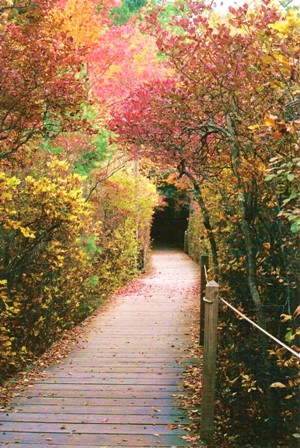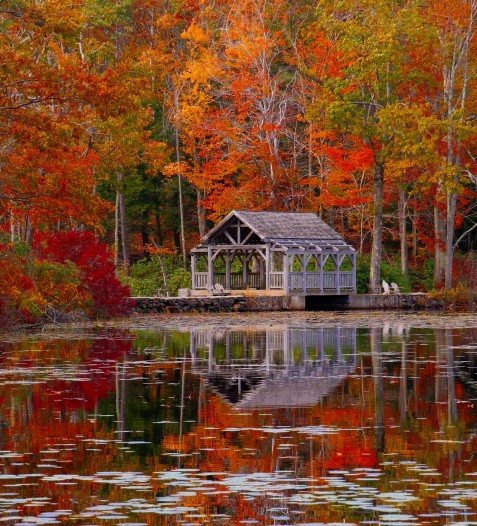 By now, we’re well into foliage season, and many of us have likely done some leaf peeping, as it is shaping up to be a year of spectacular colors (see Foliage Forecast below for why). When you’re checking out nature’s painterly display, do you ever wonder why the leaves change color in the fall?
By now, we’re well into foliage season, and many of us have likely done some leaf peeping, as it is shaping up to be a year of spectacular colors (see Foliage Forecast below for why). When you’re checking out nature’s painterly display, do you ever wonder why the leaves change color in the fall?
To get the answer, the first thing to know is that leaf color comes from three pigments:
- Chlorophyll. Needed by trees to convert sunlight into food (known as photosynthesis), chlorophyll also provides the green hue to leaves.
- Carotenoids. The same thing that gives bananas and sweet potatoes their yellow and orange hues makes leaves golden as well.
- Anthocyanins. This one is responsible for the vibrant red and purple tones in leaves as well as raspberries and eggplants.
Since daylight hours are longest during the summer, an abundance of light is available to trees. This means they’re performing photosynthesis optimally and ultimately, storing energy as carbohydrates. The result: lots of chlorophyll, and gorgeous, bright green leaves we see in the spring and summer.
Carotenoids are in leaves during the growing season as well, but we don’t get to see the colors until the fall since so much chlorophyll is present. The anthocyanins responsible for fall colors are produced in the leaves only in autumn.
As the nights begin to lengthen and our daylight hours decrease, trees begin to prepare for winter, and respond to decreasing sunlight by producing less chlorophyll, and eventually stop photosynthesis to lay dormant through the frozen season. As chlorophyll breaks down, carotenoids are able to show through, creating the vibrant display of yellows, oranges, and browns.
The visibility and brightness of the red hues you might see is determined by temperature, soil moisture, and direct sunlight. During warm, sunny fall days, leaves produce lots of glucose, or sugar, but the cool evening temperatures cause gradual closing of the veins in the leaf. This keeps the sugar sap from running down into the tree branches and trunk. More light means more sugar, and the combination of these things spurs the production of anthocyanins in certain trees like maples, which show gorgeous reds, purples, and crimson.
Foliage Forecast
The most stunning and varied-hue foliage displays come from a warm, wet spring season, a summer season that is not too hot or dry, and an autumn with warm, sunny days and crisp nights. This year, we have been experiencing exactly that weather pattern, and are predicted to be in for an absolutely gorgeous transition into winter, unless we experience some warmer and wetter than normal weather right about now.
Tree Color Guide
Different trees yield different leaf colors. Here’s a short list of what you might see when you’re leaf peeping:
- Birch – golden yellow
- Dogwood – bright red
- Oaks – russet & red
- Sugar maple – vermilion or orange
- Red maple – deep red to nearly purple
If you’d like to learn more, please join us on an upcoming fall foliage program. Happy leaf peeping!
Photo © Nicole Lemay Text by Emma Evans


